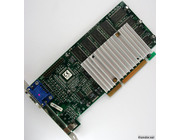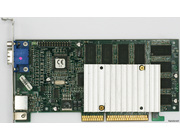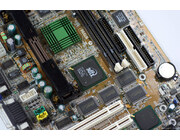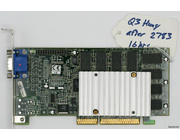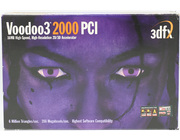As foundation 3dfx used the Banshee to create the Voodoo 3. In some old documents you can even find references to Banshee II! The Voodoo 3 is the first product which 3dfx manufactured after the STB merger. It also came with a new 3dfx logo and the uppercase D in the name was lowered.
| Basically the Voodoo 3 is a Banshee with a second TMU, or it's a Voodoo 2 with a higer clock-frequency and integrated 2D. The Voodoo 3 came in different models with different clock frequencies and TV-functions for the Voodoo 3 3500. Budget versions of the Voodoo 3 exist in form of Velocity 100 and Voodoo 3 1000-cards in OEM systems. By the time 3dfx launched the Voodoo 3, nVidia had the Riva TNT 2 ready. nVidia's new card was able to do 32-bit rendering, supported AGP-texturing and textures greater than 256x256. Not all of the features were that important (and the Voodoo 3's 16-bit rendering looked a lot better than nVidia's 16-bit rendering) but marketing wise nVidia had a good ball to play. The TNT 2 also seemed more future proof at the time because developers would start to use AGP texturing eventually. |  |








